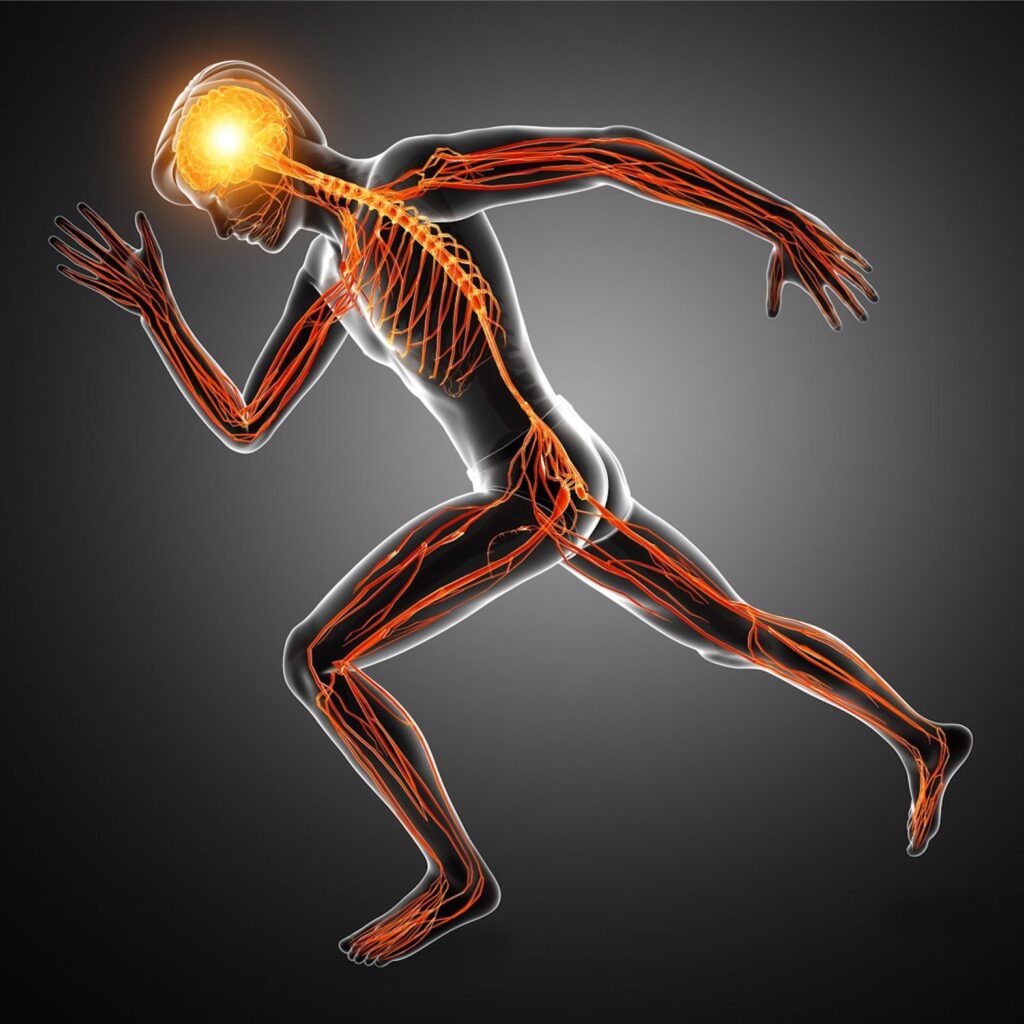Exercise & Sobriety: How Fitness Supports Addiction Recovery
Reclaim your strength. Rebuild your life. Discover how movement can transform your recovery journey.
The Mind-Body Connection in Recovery
Recovery is not just a mental journey—it’s a holistic transformation that involves the entire body. At Forr-Health, we understand that physical movement is one of the most powerful tools for healing during addiction recovery.
Exercise provides structure, releases natural endorphins, builds self-confidence, and creates positive neural pathways that support long-lasting sobriety. When combined with proper guidance and support, fitness becomes not just an activity, but a foundation for rebuilding your life.
Our approach integrates scientifically-backed exercise protocols with recovery principles, creating a comprehensive system that addresses the physical, emotional, and neurological aspects of healing from substance use disorders.

How we implement Exercise for Substance Addiction Recovery
Restore your body and mind. Everything from cardiovascular function, impaired cognitive abilities, hormonal imbalances, and metabolic dysfunction. Exercise is one of the most effective tools for counteracting these negative effects both during substance use and throughout recovery.
Alcohol Effects & Recovery
- Aerobic (Cardiovascular) Exercise – Supports liver function, improves cardiovascular health, and helps regulate blood pressure.
- Resistance (Strength) Training – Rebuilds muscle lost due to malnutrition and supports bone health.
- Flexibility & Mobility Training – Restores movement patterns often impaired by alcohol-related inflammation and nerve damage.
- Mind-Body Exercise – Aids in stress reduction and restores balance to the nervous system.
- Physical Effects: Liver damage, increased inflammation, dehydration, loss of muscle mass, and cardiovascular strain.
- Mental Effects: Depression, anxiety, impaired cognitive function, disrupted sleep patterns.

Opioid Effects & Recovery
- Post-Rehabilitative Exercise (Injury Prevention & Recovery) – Addresses pain management and improves mobility lost from opioid-induced inactivity.
- Resistance (Strength) Training – Restores muscle mass and combats the effects of opioid-induced weakness.
- Mind-Body Exercise – Reduces stress and retrains pain perception, essential for managing chronic pain post-addiction.
- Balance & Stability Training – Enhances coordination and reduces the risk of falls due to neurological impairment.
- Physical Effects: Suppressed respiratory function, decreased pain sensitivity, loss of muscle tone, and weakened immune system.
- Mental Effects: Depression, emotional numbness, impaired stress response, and dependence on external dopamine stimulation.

Stimulant Effects & Recovery
- Aerobic (Cardiovascular) Exercise – Supports heart health and reverses the damage from elevated heart rate and blood pressure.
- Functional Training – Restores motor function and coordination, which may be impaired from stimulant abuse.
- Calisthenics (Bodyweight Training) – Strengthens neuromuscular control and improves body awareness without excessive strain.
- High-Intensity Interval Training (HIIT) – Helps improve cognitive function and energy levels.
- Physical Effects: Elevated heart rate, high blood pressure, muscle breakdown, and rapid weight loss.
- Mental Effects: Paranoia, anxiety, dopamine depletion, and erratic mood swings.

Benzodiazepine Effects & Recovery
- Balance & Stability Training – Helps retrain equilibrium, which can be impaired due to long-term benzodiazepine use.
- Mind-Body Exercise – Aids in calming the nervous system and restoring sleep patterns.
- Low-Intensity Steady-State (LISS) Training – Supports recovery without overstressing the nervous system.
- Flexibility & Mobility Training – Enhances relaxation and joint mobility.
- Physical Effects: Slowed nervous system function, muscle weakness, impaired coordination, and reduced lung capacity.
- Mental Effects: Memory loss, emotional blunting, increased dependency on external sedation.

Cannabis Effects & Recovery
- Aerobic-Resistance Training (Hybrid Training) – Helps regulate dopamine levels and restores motivation.
- High-Intensity Interval Training (HIIT) – Stimulates brain function and combats mental sluggishness.
- Flexibility & Mobility Training – Addresses joint stiffness and enhances movement.
- Resistance (Strength) Training – Helps rebuild strength and enhance metabolic function.
- Physical Effects: Increased appetite, lung irritation (if smoked), and decreased motivation for physical activity.
- Mental Effects: Cognitive sluggishness, altered perception of time, and dependency on relaxation effects.

Nicotine Effects & Recovery
- Aerobic (Cardiovascular) Exercise – Improves lung function and circulation, counteracting the effects of smoking.
- Endurance Training – Helps rebuild stamina, which is often reduced by nicotine’s impact on oxygen intake.
- Circuit Training – Engages multiple muscle groups while enhancing heart health.
- Functional Training – Supports overall fitness and helps with respiratory function.
- Physical Effects: Decreased lung capacity, increased heart rate, and heightened cardiovascular stress.
- Mental Effects: Anxiety, stress dependency on nicotine, and difficulty focusing without stimulation.

Sugar Effects & Recovery
- Resistance (Strength) Training – Increases insulin sensitivity, reducing the effects of sugar on metabolism.
- Aerobic (Cardiovascular) Exercise – Helps regulate blood sugar levels.
- High-Intensity Interval Training (HIIT) – Boosts metabolism and aids in breaking sugar cravings.
- Functional Training – Improves energy regulation and helps prevent weight gain.
- Physical Effects: Insulin resistance, chronic inflammation, weight gain, and energy crashes.
- Mental Effects: Mood swings, dependency on sugar for energy boosts, and increased cravings for processed foods.

Hallucinogen Effects & Recovery
- Mind-Body Exercise – Helps ground individuals who may struggle with lingering perceptual changes or anxiety.
- Flexibility & Mobility Training – Reconnects the body and mind, improving proprioception.
- Low-Intensity Steady-State (LISS) Training – Encourages relaxation and consistency in movement.
- Balance & Stability Training – Supports spatial awareness and movement control.
- Physical Effects: Increased heart rate, unpredictable body temperature changes, and heightened sensory perception.
- Mental Effects: Potential for long-term alterations in perception, anxiety, and lingering flashbacks.

Getting Started With Exercise
Begin Your Movement Journey
Starting a fitness routine during recovery requires careful consideration and proper guidance. Our approach focuses on gradual progression and sustainable habits.
Steps to Begin a Routine:
- Start with a health assessment to understand your current capabilities
- Begin with low-intensity activities like walking or gentle yoga
- Gradually increase duration before intensity
- Focus on consistency rather than performance
- Celebrate small wins along the way
Tips for Staying Committed:
- Schedule workouts as non-negotiable appointments
- Find activities you genuinely enjoy
- Partner with others in recovery for accountability
- Track your progress to visualize improvements
- Connect movement to your recovery goals
Personal coaching makes a significant difference in both adherence and results. Our coaches understand the unique challenges of exercise during recovery and provide the perfect balance of support and accountability.
The Science Behind Exercise and Recovery
Exercise does more than build muscle—it creates profound changes in brain chemistry that directly support recovery. Explore the scientific basis for movement as medicine.
Craving Reduction
Exercise reduces cravings through multiple mechanisms:
- Increases dopamine and serotonin production, the same neurotransmitters triggered by substance use
- Creates a “competition effect” where the brain prioritizes exercise rewards over substance memories
- Generates BDNF (Brain-Derived Neurotrophic Factor) that helps rewire neural pathways
- Provides a healthy displacement activity during times when cravings typically occur
Research shows just 30 minutes of moderate activity can reduce cravings for up to 4 hours in early recovery.
Mood Stabilization
Emotional regulation is often compromised during recovery. Exercise helps by:
- Releasing endorphins that create the “runner’s high” feeling
- Reducing cortisol levels after regular training
- Stabilizing blood sugar, which impacts mood swings
- Improving sleep quality, essential for emotional equilibrium
- Creating opportunities for mindfulness and present-moment awareness
Many clients report that consistent exercise provides emotional stability similar to meditation, but with additional physical benefits.
Confidence Building
Self-efficacy—the belief in your ability to accomplish goals—is crucial for sustained recovery. Exercise builds this by:
- Providing measurable improvements and visible progress
- Creating opportunities to overcome physical challenges
- Developing discipline through consistent practice
- Fostering a positive relationship with the body after potential neglect
- Establishing a new identity as someone who values health
Each workout completed reinforces the narrative that you are capable of difficult things—a powerful belief that transfers to other recovery challenges.
Natural Energy Boost
Energy levels often fluctuate dramatically during recovery. Exercise helps stabilize energy by:
- Improving mitochondrial function for cellular energy production
- Enhancing oxygen delivery throughout the body
- Regulating blood sugar to prevent energy crashes
- Strengthening the cardiovascular system for better stamina
- Reducing fatigue through improved sleep quality
Unlike caffeine or sugar, the energy boost from regular exercise is sustainable and doesn’t create dependency or crashes.
How Fitness Helps in Addiction Recovery
Exercise offers multiple pathways to healing, supporting both physical and psychological recovery.
Restoring Brain Chemistry
Physical activity naturally boosts dopamine, serotonin, and endorphins—the same neurotransmitters affected by substance use. This helps normalize brain chemistry and reduce cravings while supporting mood regulation.
Managing Stress & Anxiety
Exercise is one of the most effective stress-management tools available. Regular movement reduces cortisol levels, increases stress resilience, and provides healthy coping mechanisms for emotional regulation.
Creating Healthy Routines
Structure is essential in recovery. A consistent exercise schedule helps establish daily rhythms, fills time constructively, and creates positive habits that support long-term sobriety and overall wellbeing.
Rebuilding Physical Strength
Many substances take a physical toll on the body. Progressive exercise helps repair muscle tissue, improve cardiovascular health, enhance immune function, and restore physical capabilities compromised during active addiction.
How Exercise Helps Combat Substance Use Effects
Different substances impact the body in various ways. Our targeted exercise protocols address these specific effects to accelerate healing and recovery.
Restoring Neurological & Cognitive Function
- Physical activity stimulates neurogenesis (the growth of new brain cells), helping reverse damage caused by substance abuse.
- Increases dopamine and serotonin production, naturally improving mood and reducing cravings.
- Improves focus, memory, and cognitive processing over time.
Strengthening the Cardiovascular & Muscular System
- Many substances weaken the heart and muscles. Resistance training and cardiovascular exercise help restore strength, endurance, and circulatory health.
- Exercise enhances oxygen flow, reducing the long-term damage of smoking, alcohol, and stimulant abuse.
Regulating Hormonal Balance & Metabolism
- Substance use disrupts metabolism and energy levels. Regular physical activity restores metabolic balance and insulin sensitivity.
- Exercise supports hormonal recovery, particularly for those suffering from testosterone or estrogen imbalances due to substance abuse.
Stress & Anxiety Reduction
- Physical activity releases endorphins, which combat stress and anxiety without the need for external substances.
- Structured movement (yoga, strength training, running) serves as a natural coping mechanism, reducing relapse risk.
Reinforcing Self-Discipline & Routine
- Exercise helps rebuild a structured lifestyle, replacing the unpredictability of addiction with positive habits.
- Establishing a fitness routine creates a sense of purpose, promoting long-term recovery success.
Exercise in Early Recovery vs. Long-Term Maintenance
During Early Recovery
- Focus on low-intensity movements such as walking, yoga, and light resistance training to reintroduce movement safely.
- Hydration and nutrition should complement exercise to avoid additional strain on the body.
- Gradual increases in activity levels prevent overexertion while the body heals.
During Long-Term Recovery
- Progressive strength training and cardiovascular conditioning optimize long-term physical health.
- Incorporating flexibility and mobility work prevents injury and supports longevity.
- Developing fitness goals provides motivation and prevents relapse by creating new dopamine-driven rewards.
“Regardless of the substance used, recovery is possible, and exercise is one of the most powerful tools in the healing process. Physical activity not only repairs the damage done to the body but also strengthens mental resilience, reduces cravings, and restores a sense of control over one’s life. By integrating structured movement and fitness into daily routines, individuals recovering from substance abuse can significantly improve their quality of life and long-term health outcomes.”
Ready to Transform Your Health?
No matter where you are in your journey, movement can be your medicine. Let Forrhealth guide your next step.
